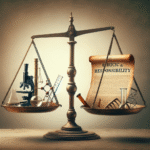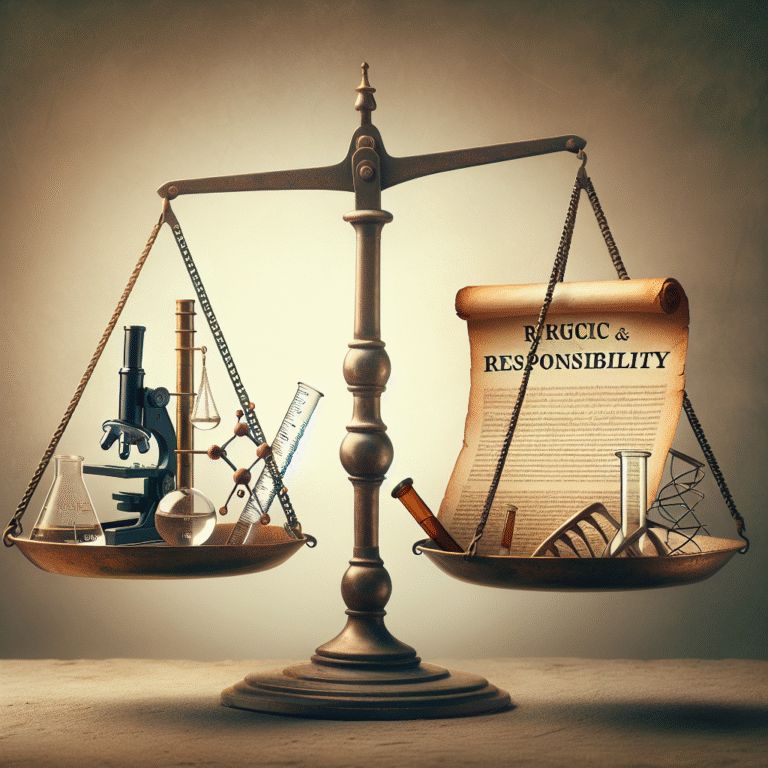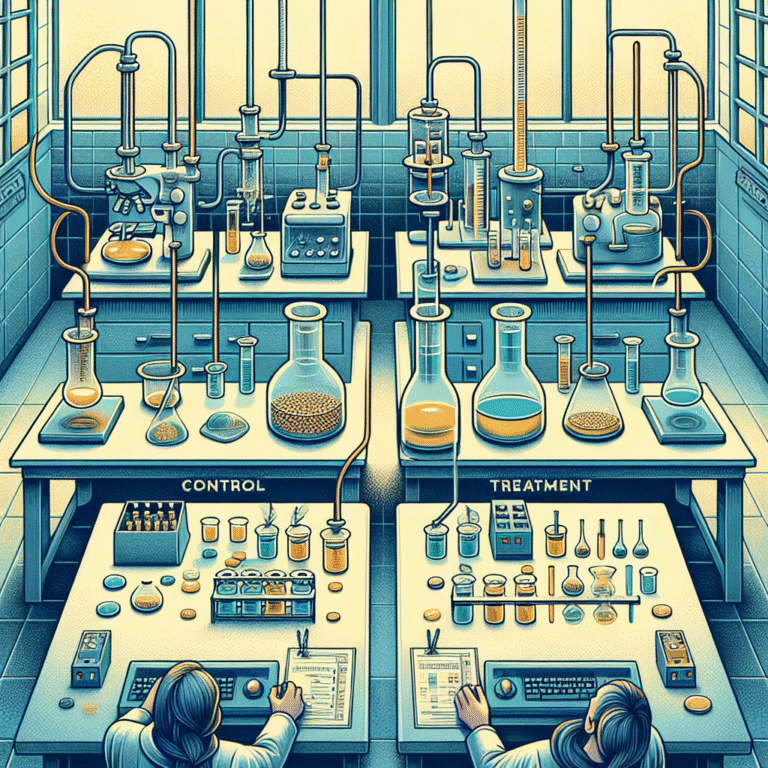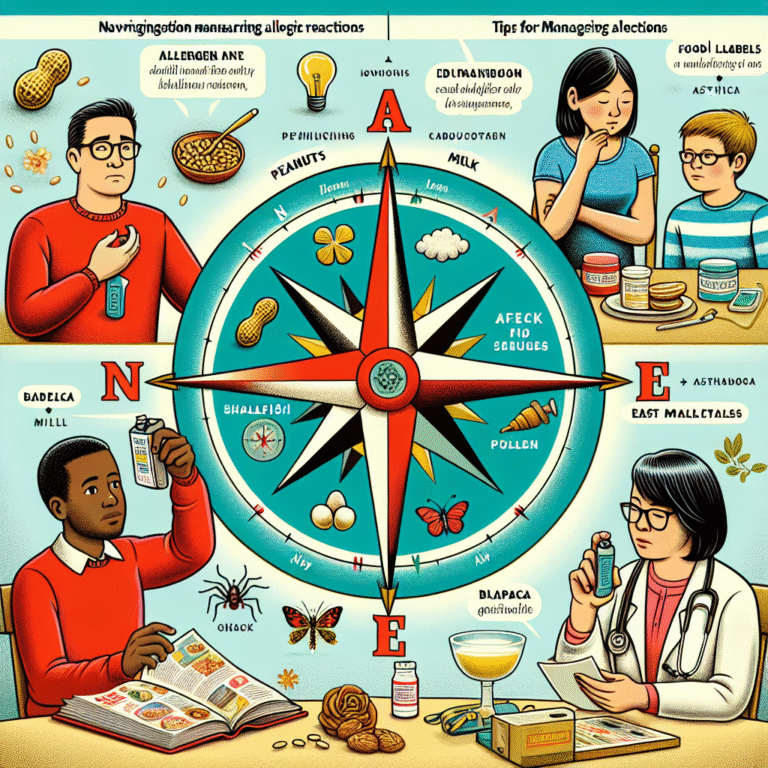
Introduction
In a world driven by data and empirical evidence, unveiling the science behind well-crafted experiments is more crucial than ever. Experimental design is not merely a technical skill; it is an art form that requires creativity, attention to detail, and a deep understanding of scientific principles. This article will take you on an enlightening journey, highlighting the intricacies of experimental design and showcasing its practical applications through real-world case studies. Whether you are a budding researcher, an established scientist, or simply curious about the scientific process, this guide will transform how you view experimentation. Join us as we delve into the art and methodology of experimental design and discover how to orchestrate compelling experiments that yield actionable insights.
What is Experimental Design?
Experimental design refers to the systematic approach researchers use to plan, conduct, and analyze experiments. It serves as the backbone of scientific inquiry, allowing for the controlled testing of hypotheses. At its core, effective experimental design minimizes bias, controls for confounding variables, and maximizes the reliability and validity of results.
Key Components of Experimental Design
- Hypothesis Formation: A clear and testable hypothesis is essential, guiding the experiment’s direction.
- Variables: Distinguishing between independent (manipulated) and dependent (measured) variables is vital.
- Controls: Implementing control groups helps in isolating the effects of the independent variable.
- Randomization: Randomly assigning subjects mitigates selection bias and enhances the generalizability of findings.
- Replicability: Designing experiments that can be replicated is crucial for the verification of results.
The Importance of Experimental Design
The methodology behind experimental design is not only about obtaining results but also about ensuring that those results are credible and applicable in real-world scenarios. Poorly designed experiments can lead to erroneous conclusions, misallocation of resources, and even harm in sensitive fields like healthcare.
Case Study: The Framingham Heart Study
One landmark example of effective experimental design is the Framingham Heart Study, initiated in 1948 to understand cardiovascular disease. By carefully selecting a diverse cohort and implementing rigorous follow-up protocols, researchers have successfully identified numerous risk factors that have shaped public health policies. This demonstrates how a robust experimental design can influence an entire field of study.
Methodologies of Experimental Design
1. Completely Randomized Design
In this design, subjects are randomly assigned to experimental and control groups. This methodology minimizes bias but may not control for certain confounding variables.
Application: Often used in medical trials where the treatment effect needs to be isolated.
2. Block Design
This method involves grouping subjects into blocks based on certain characteristics (e.g., age or gender) before randomizing them within those blocks.
Application: This design is particularly useful in agricultural studies where external factors may significantly influence results.
3. Factorial Design
Factorial designs can test multiple factors simultaneously, allowing for the exploration of interactions between variables.
Application: Widely used in pharmaceutical studies to evaluate the effectiveness of multiple drugs under various conditions.
4. Cross-Over Design
In this design, participants receive both treatments in a random order, allowing for within-subject comparisons.
Application: Common in clinical trials where the effects of treatments need to be directly compared.
Table: Summary of Experimental Design Methodologies
| Design Type | Key Feature | Best Use Case |
|---|---|---|
| Completely Randomized | Random assignment | Medical trials |
| Block Design | Grouping by characteristics | Agricultural studies |
| Factorial Design | Testing multiple factors | Pharmaceutical studies |
| Cross-Over Design | Within-subject comparisons | Clinical trials |
Real-World Applications
The Power of Field Experiments
Field experiments are conducted in real-world settings, providing valuable insights that controlled lab experiments may miss.
Case Study: The "Broken Windows" Theory
The Broken Windows Theory, developed in the 1980s, posits that visible signs of disorder encourage further crime. A series of field experiments in New York City, focusing on restoring order in public spaces, effectively reduced crime rates. This is a prime example of how experimental design translates theoretical concepts into practical solutions.
Laboratory vs. Field Experiments
While laboratory experiments offer stringent control, field experiments excel in external validity. Understanding the strengths and weaknesses of both can guide researchers in selecting the appropriate design for their needs.
Data Analysis and Interpretation
Once an experiment is conducted, the next critical step involves analyzing the data. Statistical methods, ranging from t-tests to ANOVA, are essential tools for understanding the implications of the findings.
Importance of Statistical Significance
Statistical significance helps determine whether the results are due to chance or if they have real-world implications. However, researchers must also be cautious not to overemphasize p-values at the expense of effect sizes and practical significance.
Ethical Considerations in Experimental Design
Designing experiments also requires a keen awareness of ethical implications. Informed consent, the right to withdraw, and minimizing harm are fundamental principles that must be adhered to.
Case Study: Clinical Trials and Informed Consent
In clinical trials, informed consent is paramount. Ethical breaches, like the Tuskegee Syphilis Study, underscore the importance of ethical guidelines. Researchers must ensure that participants understand the potential risks and benefits of their involvement.
Conclusion
Unveiling the Science: The Art and Methodology of Experimental Design is more than a simple framework; it is a crucial element of sound scientific practice. From hypothesis formation to ethical considerations, every aspect plays a role in the creation of compelling experiments that yield impactful results. The journey of experimental design is not just about collecting data; it is about weaving a narrative that can drive change.
As you embark on your own research endeavors, remember the power of precise design and thoughtful methodology. The insights derived from well-crafted experiments can illuminate the path forward in any field, paving the way for innovation, understanding, and discovery.
FAQs
1. What is the most important aspect of experimental design?
The most crucial aspect is formulating a clear, testable hypothesis, as it guides the entire experiment.
2. How can I control for confounding variables?
Using randomization, blinding, and including control groups are effective strategies to minimize the influence of confounding variables.
3. What is the difference between qualitative and quantitative experiments?
Qualitative experiments focus on understanding concepts through non-numerical data, while quantitative experiments involve numerical data and statistical analysis.
4. Why is replicability important?
Replicability ensures that results are not just due to chance, providing credibility and allowing others to verify findings.
5. How do ethics play a role in experimental design?
Ethics guide researchers to conduct experiments responsibly, ensuring participants’ rights and well-being are prioritized throughout the research process.
Unveiling the science of experimental design is a journey that combines structure, creativity, and scientific rigor. Embrace the challenges, and let your curiosity lead you to groundbreaking discoveries!

















